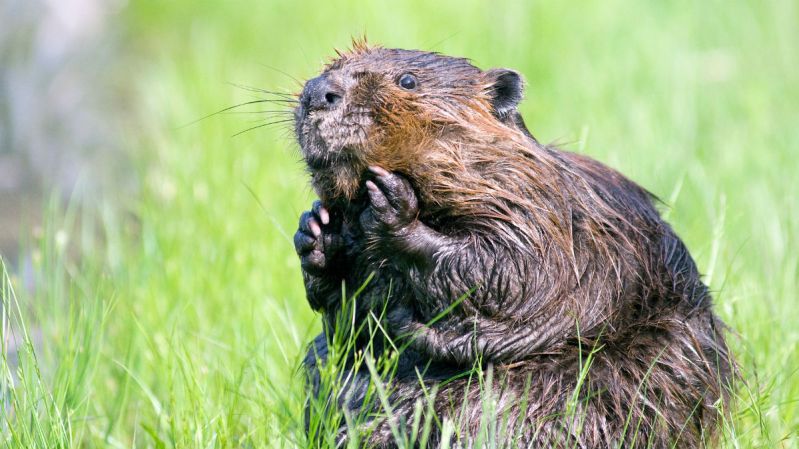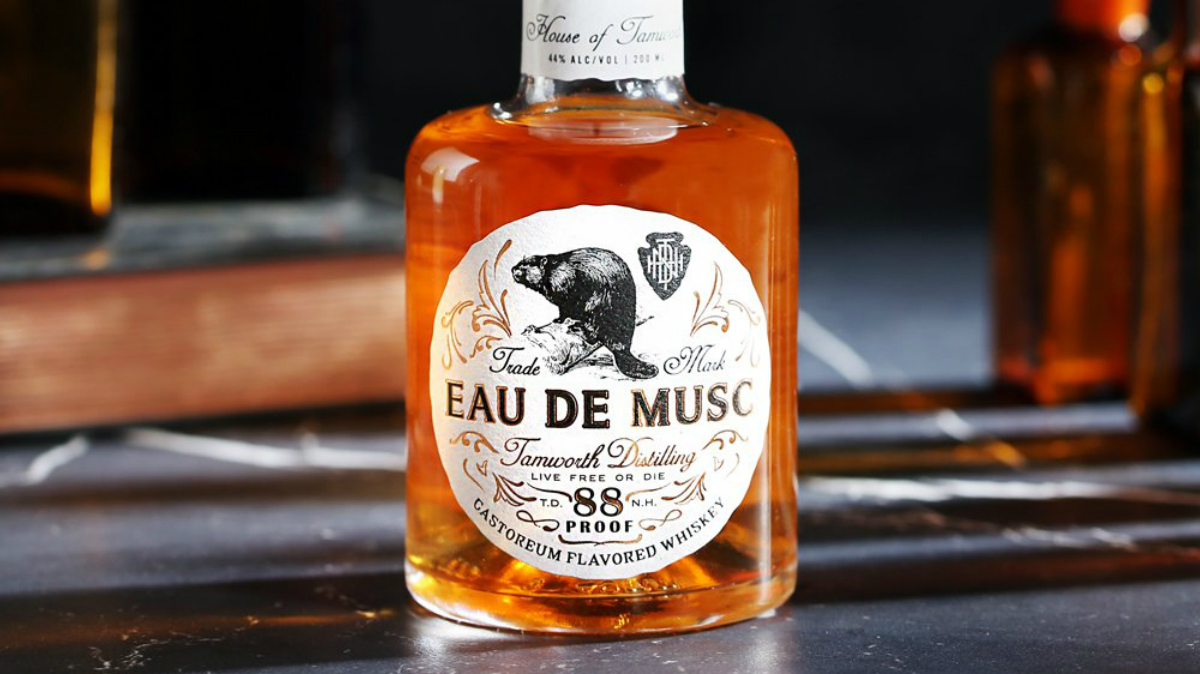Dam, Steven Grasse is at it again.
Grasse, who is the mind behind brands such as Hendrick’s Gin and Sailor Jerry, has made a career of making both best-selling spirits and those that push what we conceive of as normal. One of his latest releases certainly does the latter, as it is made with oil extracted from beavers.
Yes, beavers.

Working with his team at Tamworth Distilling and Mercantile, Grasse has created Eau de Musc (“Water of Musk”), an 88-proof, straight bourbon whiskey that is infused with castoreum. Castoreum, for those that have never heard of it, is a substance excreted from a beaver’s castor sac (located just under the tail) and is used in conjunction with urine to mark territory in the wild.
If you think that this sounds absolutely crazy (or disgusting, or both), allow us to play devil’s advocate for a moment.
It may not seem as wild when you realize that castoreum already incorporated in a wide variety of everyday things. In perfume, for example, castoreum is utilized to impart the smell of leather. On the food side of things — yes, it is used in food and more often than you would expect — castoreum is an additive (recognized by the Food and Drug Administration as “generally recognized as safe,” or GRAS) that can serve as a replacement for vanilla flavoring; in some other circumstances, it is used for in part to replace strawberry or raspberry. The reason you’ve probably never had to contemplate beaver gland extract in your food is that castoreum is often listed as “natural flavoring” on ingredient lists. Oh, and castoreum is also used to give flavor and odor to cigarettes.
What we’re saying is castoreum gets around and you’ve probably already ingested or worn it at least once in your life, so this whole whiskey thing isn’t actually all that weird. Anyway.
According to the brand, “the full-bodied, two-year aged bourbon whiskey has a bolstered mouthfeel with a vanillin nose and notes of spice. The addition of birch oil, raspberry and Canadian snakeroot, a woody spice akin to ginger, comingle with the natural fruitiness of the castorerum, making the finish warm, crisp, and incredibly palatable.”
To get the castoreum for whiskey, Grasse and his team worked with Anton Kaska, a professional trapper who is known for his commitment to sustainable practices. The castoreum sacs infused with Eau de Musc would normally have been thrown out.
If you want to get your hands on the whiskey, you’ll need to do some traveling — it is only available (in small quantities) at Art in the Age in Philadelphia. It is house in 200 mL vintage-style perfume bottles and retails for $65.





